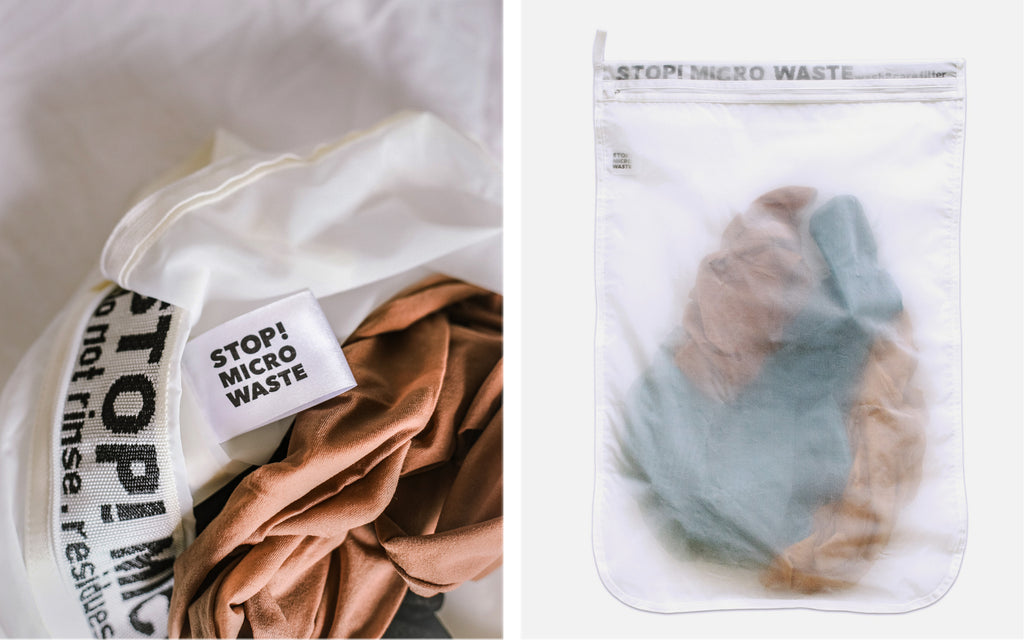Microplastic pollution, tights & friends with benefits
Responsible production is a must-have for us, but we’re certainly not perfect. Every item produced comes at a cost to the environment so we’re constantly working on our responsibility agenda, an initiative to be more transparent about our production processes from end-to-end (more on this coming soon). As part of this agenda, we're deep-diving into every aspect of tights production, including what happens once tights, or any item of clothing, reaches your house… or your washing machine. Enter microplastics and a few facts that have hit home.
THE BOWL OF PLASTIC SOUP
- By 2025 there will be 1 ton of plastic for every 3 tons of fish in our oceans, and by 2050 the weight of plastic will overtake that of fish if we continue at current trends.
- 3.2 million tons of microplastics (non-biodegradable plastics) make their way into our oceans every year.
- Microplastics come from all kinds of plastic items – from drink bottles, plastic bags, and also from our own clothes.
- 35% of microplastics that make their way into our waterways come from us washing clothing made from synthetic fibres at home – whether by hand or in a machine.
- 50 billion plastic bottles: that’s the equivalent in the volume of plastics that come from our clothes on a yearly basis!
What this means is that our waterways are turning into a bowl of plastic soup. Harming the wildlife that reside in them and releasing chemicals into the water we consume.
GUPPYFRIEND: THE FRIEND WITH BENEFITS
In an aim to reduce microplastics and better protect our environment, we’ve teamed up with Guppyfriends to bring you the Guppyfriend Washing Bag. It’s a scientifically approved solution against the microplastic pollution that comes from our clothing. The guppy bag acts as a filter, collecting rogue clothing fibres during hand or machine washing and preventing them from entering our rivers and oceans. It also reduces fibre shedding, so your tights, or other garments, will last longer, too.

Guppy bag, the friend with benefits.
If you want to further deep-dive into this bowl of plastic soup or take a look at the data firsthand, here are some resources:
World Economic Forum - Microfibers - How can you avoid them?






















